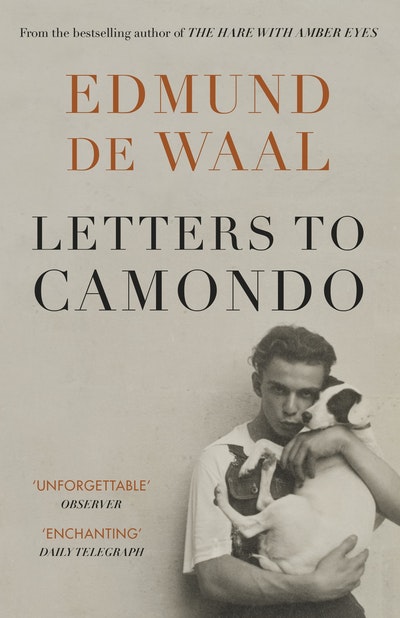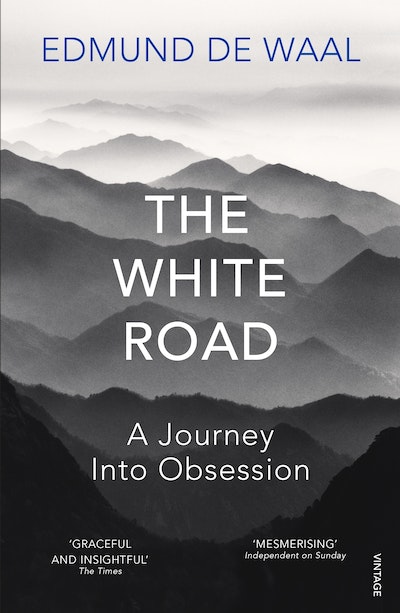- Published: 15 June 2022
- ISBN: 9781529114294
- Imprint: Vintage
- Format: Paperback
- Pages: 192
- RRP: $22.99
Letters to Camondo
- Published: 15 June 2022
- ISBN: 9781529114294
- Imprint: Vintage
- Format: Paperback
- Pages: 192
- RRP: $22.99
De Waal's elegant prose, rapt eye for aesthetics, subtle character sketches, and nuanced musings on Jewish identity yield a rich, Proustian recreation of a lost era
Publishers Weekly
More than chronicling the [Camondo] family's splendor and tragic end, de Waal has created a deeply hued tapestry of a lost time and a poetic meditation on grief, memory, and the fragile consolation of art... A radiant family history.
Kirkus
Letters to Camondo immerses you in another age - one as sharply torn with rifts and bigotry, political uncertainty and changing fortunes as our own - but also a time of grace and the deliberate cultivation of pleasure... de Waal creates a dazzling picture of what it means to live graciously
Nilanjana Roy, Financial Times
Moving... beautifully produced... I visited the Musee Nissim de Camondo some dozen years ago. Now I long to go back
Gillian Tindall, Literary Review
De Waal's ability to conjure up the personality of a character long dead through his possessions is a joy... A moving picture of the Jewish condition in Europe, always ready for flight once the scapegoating begins again, is made starkly apparent... In de Waal's hands objects stand for much bigger truths, of questions of loss and injustice
Oliver Basciano, ArtReview
I was deeply moved... [de Waal] has found a way to meditate on exile, migration and polarisation that feels painfully relevant
Johanna Thomas-Corr, Sunday Times
Letters to Camondo... is subtle and thoughtful and nuanced and quiet. It is demanding but rewarding. It will make you think differently about trunks in the attic and it will make you read old letters with new eyes
Laura Freeman, The Times
Letters to Camondo tells de Waal's version of the Camondo story... layers of memories, hopes, fears embedded in the Musée Camondo brought alive...remarkable
Jackie Wullschläger, Financial Times
Consistently illuminating... excellently illustrated... De Waal's excavation of the meanings of assimilation is considered, compassionate and appreciative of its costs... he is a wise guide to people and things that are dispersed and are collected... This book is a wonderful tribute to a family and to an idea
Nicholas Wroe, Guardian
This is a marvellous book, elegant, tender, loving, appreciative, disturbing, a reminder of both the fragility and resilience of high culture, indeed civilisation
Allan Massie, Scotsman
A slim elegant volume of beautifully written letters
Louise Carpenter, The Times
Enchanting... the prose is immaculately polished. [Edmund de Waal's] intelligence and scholarship are fastidious, his sensibility quivers like the wings of a hummingbird
Rupert Christiansen, The Telegraph
de Waal's history, gives Letters to Camondo an undeniable emotional intensity
Brendan King, Times Literary Supplement
de Waal is a writer of grace and restlessly enquiring intelligence, and Letters to Camondo succeeds admirably... Edmund de Waal's beautiful book opens a window onto an entire lost world
Ian Thomson, Evening Standard
A rich and gorgeous meditation on art and grief... Beautifully written, elegantly odd and wonderfully immersive, this is a book like no other
Daunt Books
De Waal's sentences like to take the historical weight of the objects he describes, in prose that often puts you in mind of Bruce Chatwin, that other aesthete magically in thrall to painfully buried European history. He builds a picture of Camondo accumulating belongings in an extravagant effort at belonging... [an] unforgettable book
Tim Adams, Observer
De Waal's gentle and thoughtful probing is persuasive and his exploration of the family history after the count's death in 1935 - especially the deaths of family members under the Nazis - is both poignant and unforced
Michael Prodger, New Statesman
The form of a series of letters to Camondo... [is] an inspired idea, for it allows de Waal to achieve an intimacy of tone and directness of expression... a powerful address that is both a rupture with and a binding to all that precedes it
Laurel Berger, Spectator
A fascinating portrait of the French collector Count Moise de Camondo
A Little Bird, *Summer Reads of 2021*
This is a marvellous book, elegant, tender, loving, appreciative, disturbing, a reminder of both the fragility and resilience of high culture, indeed civilisation
Scotsman
I was deeply moved... De Waal has found a way to meditate on exile, migration and polarisation that feels painfully relevant
Sunday Times
De Waal is a writer of grace and restlessly enquiring intelligence, and Letters to Camondo succeeds admirably... Edmund de Waal's beautiful book opens a window onto an entire lost world
Evening Standard
De Waal's sentences like to take the historical weight of the objects he describes... An unforgettable book
Observer
It will make you think differently about trunks in the attic and it will make you read old letters with new eyes
The Times







